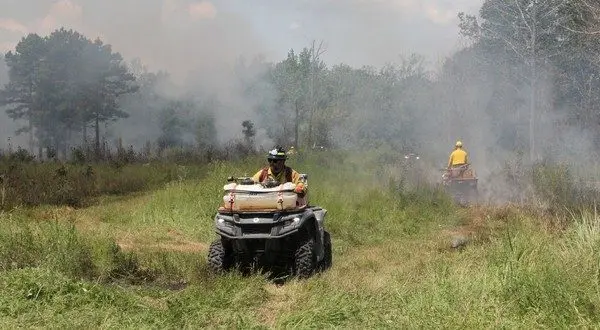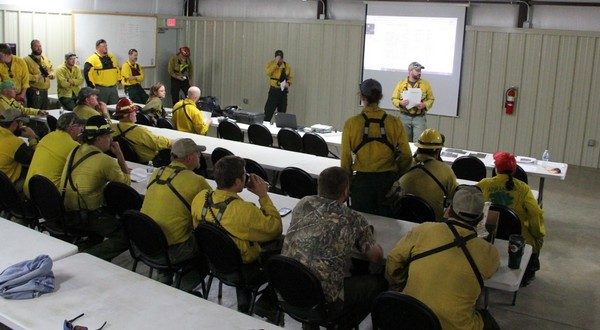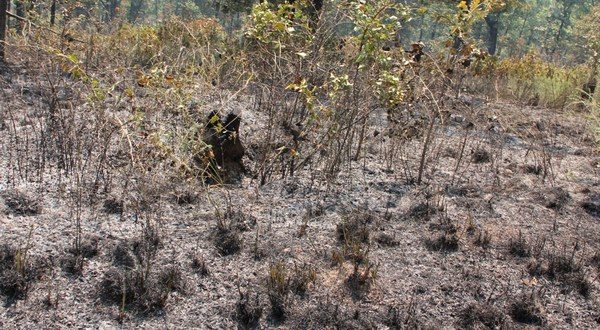
Photo courtesy of the Arkansas Game and Fish Commission
The Arkansas Game and Fish Commission conducted a 733-acre prescribed burn Tuesday on the Camp Robinson Special Use Area to improve habitat for northern bobwhite quail and other wildlife.
The burn, the largest summer fire ever undertaken at the site, was the result of nearly a year of planning and two weeks of final preparations. Sixty-four personnel from four AGFC divisions and four partner organizations – The Nature Conservancy, Central Arkansas Water, Arkansas Forestry Division and the Central Arkansas Prescribed Burn Association – took part in the operation.
The effort targeted invasive sweetgum thickets and other woody plants, aiming to reduce their spread, control nonnative species and encourage native plant diversity, particularly broadleaf flowering plants. Prairies in the area require fire every 18 to 36 months to remain healthy and prevent encroachment from trees and shrubs.

The burn was divided into 10 separate units to create varied habitat conditions and improve management safety. Crews contended with high temperatures and used a specialized ignition drone equipped with thermal imaging to start fires in inaccessible areas and monitor the containment zone for flare-ups.
Late growing-season burns are more effective at damaging woody plants due to the higher moisture content in vegetation, allowing flames to linger longer at plant bases. Officials reported meeting the goal of topkilling at least half of the targeted woody plants, which will make future habitat maintenance more manageable.

The burn also left standing dead stems that provide overhead cover for ground-nesting birds while opening ground space for movement and encouraging growth of insect-attracting plants. The project was cited as an example of interagency cooperation to restore prairies, grasslands and other open habitats vital to pollinators and upland wildlife.
WebReadyTM Powered by WireReady® NSI










